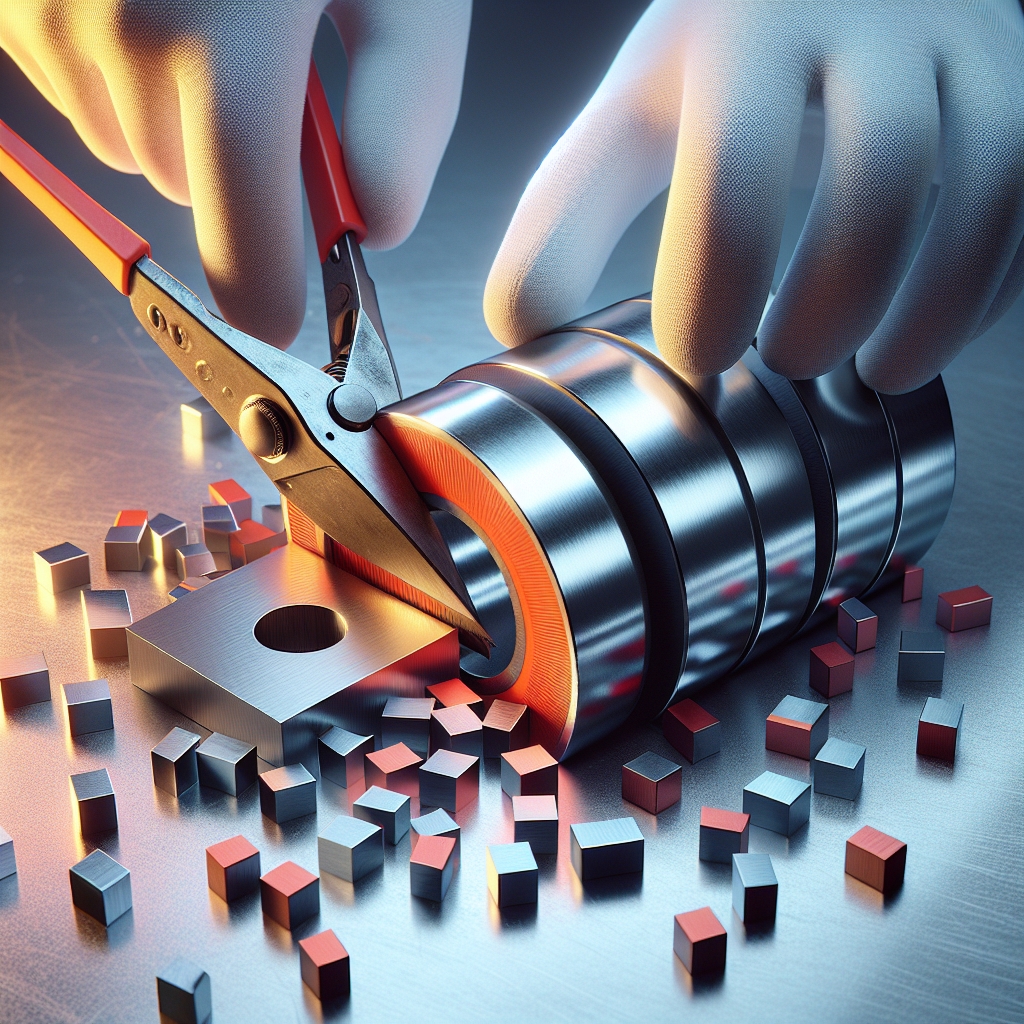Neodymium magnets, known for their exceptional strength and magnetic properties, are widely used in various applications, from hard disk drives to magnetic resonance imaging (MRI) machines. These rare-earth magnets, made from an alloy of neodymium, iron, and boron (NdFeB), have revolutionized the way we use magnets in technology. However, their incredible strength and specific material properties raise questions about their malleability and whether they can be customized or reshaped for specific uses, including cutting. This article delves into the complexities of working with neodymium magnets, the process of cutting them, and the precautions that need to be taken.
Understanding Neodymium Magnets
Before discussing the feasibility of cutting neodymium magnets, it’s essential to understand their composition and why they are so highly valued. Neodymium magnets are the strongest type of permanent magnets available, making them indispensable in modern technology. Their strength comes from the microstructure of the NdFeB alloy, which forms a tetragonal crystalline structure that aligns easily with magnetic fields, producing a high magnetic flux density.
However, this strength is also accompanied by certain vulnerabilities. Neodymium magnets are brittle and can fracture or chip if not handled carefully. They are also prone to corrosion, which can weaken their magnetic properties. To protect against these issues, neodymium magnets are often coated with materials like nickel, copper, or gold.
The process of manufacturing neodymium magnets involves sintering, where the NdFeB alloy is powdered and then fused into a solid form under high heat and pressure. This process aligns the magnetic grains, enhancing the magnet’s strength. Once formed, the magnets are magnetized by exposing them to a strong magnetic field.
Can You Cut Neodymium Magnets?
Cutting neodymium magnets is not straightforward due to their brittleness and the risk of demagnetization. However, it is possible with the right tools and precautions. The cutting process must be done carefully to avoid damaging the magnet or reducing its magnetic properties.
The most common method for cutting neodymium magnets is using a diamond-plated wheel or a laser cutter. These tools can handle the hardness of the magnet and allow for precision cutting. However, the process generates a significant amount of heat, which can demagnetize the magnet if not controlled. Cooling the magnet with water or another coolant during cutting can help mitigate this risk.
It’s also important to note that cutting a neodymium magnet will expose the raw, uncoated edges of the magnet, making it susceptible to corrosion. After cutting, the newly exposed surfaces should be coated or sealed to protect against corrosion.
Due to the complexity and risks involved, cutting neodymium magnets is generally recommended to be done by professionals or those with experience in handling and working with these materials.
Precautions and Safety Measures
Working with neodymium magnets, especially when cutting or modifying them, requires strict safety precautions to prevent injury and ensure the integrity of the magnet.
- Wear Protective Gear: The cutting process can produce sharp shards and dust, which are hazardous. Wearing safety goggles, gloves, and a dust mask is essential to protect against these risks.
- Use Appropriate Tools: Only use tools that are capable of cutting through neodymium magnets without causing excessive heat or damage. Diamond-plated wheels and laser cutters are preferred.
- Manage Heat: Keep the magnet cool during cutting to prevent demagnetization. Using a coolant or water can help dissipate the heat generated by the cutting process.
- Secure the Magnet: Neodymium magnets are incredibly strong and can attract metal objects with significant force. Secure the magnet and keep metal objects at a safe distance to avoid accidents.
- Protect Against Corrosion: After cutting, immediately treat the exposed surfaces to prevent corrosion. This can involve coating the surfaces with a protective layer or sealing them.
In conclusion, while cutting neodymium magnets is possible, it requires careful consideration of the material’s properties, the right tools, and adherence to safety precautions. The process should ideally be left to professionals who can ensure the integrity of the magnet and the safety of those involved. Understanding the complexities of working with neodymium magnets is crucial for anyone looking to customize or modify these powerful objects for specific applications.

